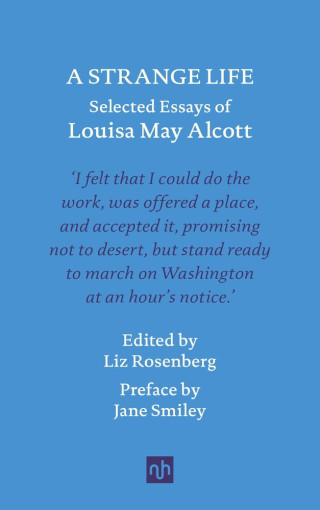Her first taste of significant success came from a book-length memoir about her time as a Union war nurse. Alcott’s autobiographical “Hospital Sketches” captured the attention of a reading public hungry for news of the American Civil War. But it was not written with an eye toward fame. Culled from letters home and journal notes, Alcott thought it a hodge-podge of sketches, unlikely to interest anyone.
She was more shocked than anyone when it became a popular sensation. First published in serial form and later as a book, (1863) “Hospital Sketches” provided rare on-the-ground reportage of the long, bloody conflict from a war nurse’s perspective—a thing unheard of at the time. Her non-fiction was sometimes severe, and always strived to be real—even when she included elements obviously invented.
“Hospital Sketches,” this longest and most memorable work of non-fiction, features a Civil War narrator named “Nurse Periwinkle.” Nearly everything else in it derives from her actual personal history: Louisa did nurse sick and dying Union soldiers; she witnessed their arrival from the catastrophic battle at Fredericksburg. She served as head of the night ward after only two weeks on the job. In the Hurly Burly House hospital (again, only the name is changed) she came down with typhoid pneumonia that nearly killed her, and was heavily dosed with the wonder drug calomel, the mercury poison that likely did.
Grateful nineteenth century readers found in “Hospital Sketches” their first real-life account of the solders’ experiences of the Civil War. Hers was new journalism before the phrase was ever invented—and readers embraced it. War news traveled northward slowly and unreliably. “Hospital Sketches” filled the gap for anxious Yankee families and friends. But Louisa expressed amazement at the book’s success. “I cannot see why people like a few extracts from topsey turvey letters written on inverted tea kettles,” she marveled. Only later did she admit that these autobiographical and realistic essays “pointed the way” toward her true writing material and style.
Among her best essays, one of the last written is Alcott’s autobiographical piece on her unhappy early childhood experience at a communal farm. Written in 1873, “Transcendental Wild Oats” alternates broad comedy with tragedy. It records in detail the near-dissolution of the Alcott family. They nearly froze, nearly starved. The commune even at its most populous was too small to succeed, and it housed eccentrics and bonafide lunatics equally. The utopian experiment was a dismal failure, for the commune and for the Alcotts personally, and at the end of it all Bronson suffered a breakdown.

